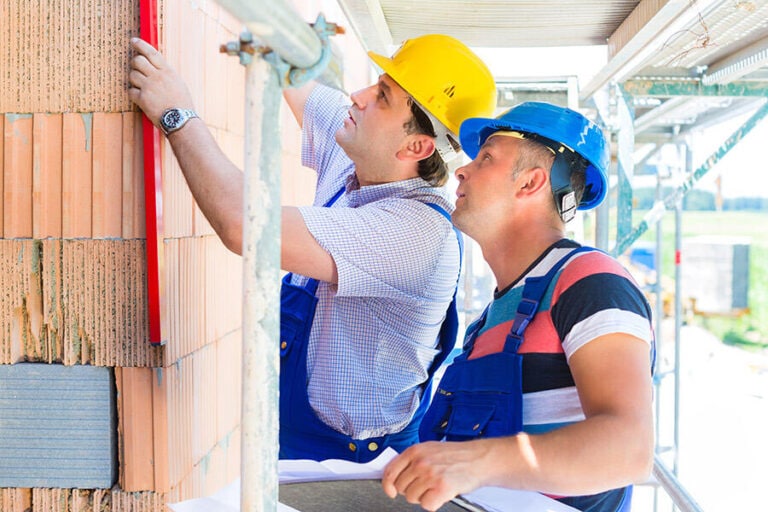There is a rising demand for new construction buildings lately. With a whole new generation gearing up to enter the workforce, more buildings are needed to occupy them all. And not to mention the requirement for new apartments for all those who are going to start living independently. But with the ongoing labor shortage and hesitation to embrace digital technology like BIM and construction project management software, many projects are seen to have poor quality work.
Speed isn’t always the basis for the success of a construction project. While finishing before the deadline is favorable for both the contractor and the client, poor quality work can cost them more time and money in carrying out repairs. Oftentimes, the contractor’s reputation is negatively impacted too, and prevents him to do further business with the same client.
Hence, it should always be the goal of a construction team to finish on time while meeting building quality standards. You have to remember too that poor quality building can be dangerous to occupants and may put them in a sticky legal battle.
The OSHA has recorded several cases of death and injuries caused by faulty installations of electrical systems, gas pipes, and collapsed buildings. Because of that, there is now a stricter criterion in finished buildings when inspected at the end of the construction.
Contractors should take pride in doing their work. And to gain that boasting right, they need to practice quality work in the projects they take. How? That’s what we’re going to discuss today.
How to Improve Construction Project Quality
Some starting contractors may not be confident enough that they can deliver quality work within schedule given the labor shortage that’s wrapping the construction industry. But by hiring subcontractors, using modular construction, and implementing technology like project management software and construction crew management software, processes at the site can be streamlined while work quality is ensured. For some other strategies, let’s look into these 10 tips on improving work quality in construction:
- Understanding Project Specifications
Before writing the project plan, the contractor should fully understand the standards and specifications set by the client and his team. These standards should reflect on the results of the plan you make so study them well and brainstorm with your stakeholders on how each standard and specification can be met. These standards and specs are defined in the contract for a purpose and that is to comply with the state’s building code. They were carefully planned by your client’s architects and engineers so work closely with them too when writing the plan. If in doubt, always ask questions so you won’t end up working on the project only to do repairs when you think it’s already done.
- Discuss Quality Requirements with the Team
After understanding the quality requirements of the project, you should also discuss them with your crew members so they’ll know why their schedule and set of tasks are designed that way. You can do this orientation before the team starts working on the project. This is your opportunity to tell them too that poor quality work won’t be accepted. Set high standards from the start and encourage your crew members to take pride in their work. Make them accountable for their own tasks and you can also opt to offer rewards to people with exceptional performance.
- Hire the Right People
We know that this can be difficult at this time now that the industry is facing a higher rate of labor shortage. You can probably hire newbies in the field but at least make sure that the person you are hiring is enthusiastic and willing to prosper in the work he is trying to acquire. Send your team to training so they can level up their skills. Investing time and money on the right training will greatly benefit you as they can apply what they’ll learn at work to improve their work quality. Have your foremen offer their mentoring when needed too.
- Never Settle for Poor Quality Work
Time always seems to be the enemy of quality work. There are contractors who still accept tight schedules even if they aren’t sure that they can deliver a good quality project on time. They do so to catch up with their target annual profit. That said, some contractors tend to condone low quality. Your crew members will then start thinking that substandard work is acceptable for as long as the deadline is met. So never allow poor quality work in your projects. As we mentioned, poor quality work can cost you more time and money when you end up doing repairs.
- Daily Project Progress Monitoring
It’s easy to miss out on instruction when working at the site, most especially when the team is placed under pressure because of the deadline. But make it a rule to have your crew members report any errors committed at the site. When they look away and ignore these mistakes, all other processes that come next will lead to bigger mistakes.
Always check work results. It doesn’t have to be physical checking. Read reports sent to you through your project management software but still have your foremen check on the actual progress and if there are any errors in the work. This will let you strategize on remedies before they become worse.
- Carry Out Testing
Schedule testing from time to time. Make it a regular part of your quality control. You can carry them out after each milestone to see whether the structure is in compliance with your client’s standards and specifications.
When tests fail, track where errors began and implement rework right away. Do not falsify test results just to save time. If the product later fails and caused injuries or death, you can face lawsuits.
- Check Raw Materials Before Starting the Project
The quality of the project is dependent on several factors and one of them is the material that you use. No matter how skillful the project team is when the materials used are of low quality, the end result still won’t be as good. That said be sure to use reputable suppliers who can deliver quality materials for your project. Be sure that the materials you order have the right specifications too. And finally, when they arrive at the site, be sure to check their condition and have any damaged material be replaced.
- Protect Completed Work
Your project will be made up of phases. For every phase finished, be sure to protect them to prevent rework caused by damages inflicted by careless people at the site. If it’s timber, cardboard, or any other sensitive materials, have them covered with plastic wraps. Also, place signages around the area you need to protect so that your crew members will be reminded that they are prohibited from going near the newly finished phase. Keep the wrap and the signage thee until that phase is ready for handover.
- Carry Out Repairs Correctly
Mistakes can be avoided through proper planning, efficient construction crew management, and regular progress tracking. However, and like we mentioned before, there will issues that can arise because of unexpected situations at the site. For instance, weather disturbances make it difficult to predict the right drying condition and time of concrete.
Since it’s almost unavoidable, what you can do is to carry out repairs correctly. As we mentioned, never ignore mistakes and act on them immediately so that you can go on with other parts of the building correctly too.
Do not wait until the building is done and your client’s inspector be the one to point out your mistakes This can be very costly on your part. Don’t wait to be called back too after 5 years to work on damages that have already caused bigger problems.
- Document Everything!
Documenting everything about your project can be a pain, most especially in a construction site where too many things can happen in a day. Fortunately, documentation at the site can now be automatic.
To make work easier, prepare checklists containing things that need to be accomplished in a day, the resources to be used, and possible issues encountered that foremen can simply tick. It’s even more convenient now that you can send the checklist through your project management software.
It’s also beneficial that project management software is now available to use in mobile phones. This made it easier for crew members and foremen to record every activity at the site and report them back to the project manager who’s at the office.
Finally, documentation is very important for a construction company trying to expand its business. Previous project data can be helpful in writing better plans on the next job order as well in strategizing for more workable schedules and estimates. All these lead to the better work quality of the construction team.
Improving Project Quality With Collaborative Software
The construction industry is aiming for high-quality project deliveries that are within the schedule and budget. But it has been challenging for many firms to achieve all three. Most of the time they need to choose between quality and speed.
But times have changed. Technology is making it possible for construction projects to be completed on time while achieving quality. There’s BIM that helps improve wok quality and now there’s the construction project management software to ensure that quality is met at the site.
In the past, project managers can only check on the situation at the site when he does site visits. But with photo documentation and construction project management software, he can already find out what’s happening at the site no matter where he is. This helps him guide his team in taking the right action when mistakes happen, or instructing them in detail so errors can be avoided. This way costly fines and repairs that may damage the company’s reputation can be prevented.
Keep in mind that quality work can win you repeat business with a client, save you from costly repairs, and spare you from damaging lawsuits. Speed is important but making sure that the project is safe and in compliance with the set standards and specs is what will win the trust of clients and more future projects.





